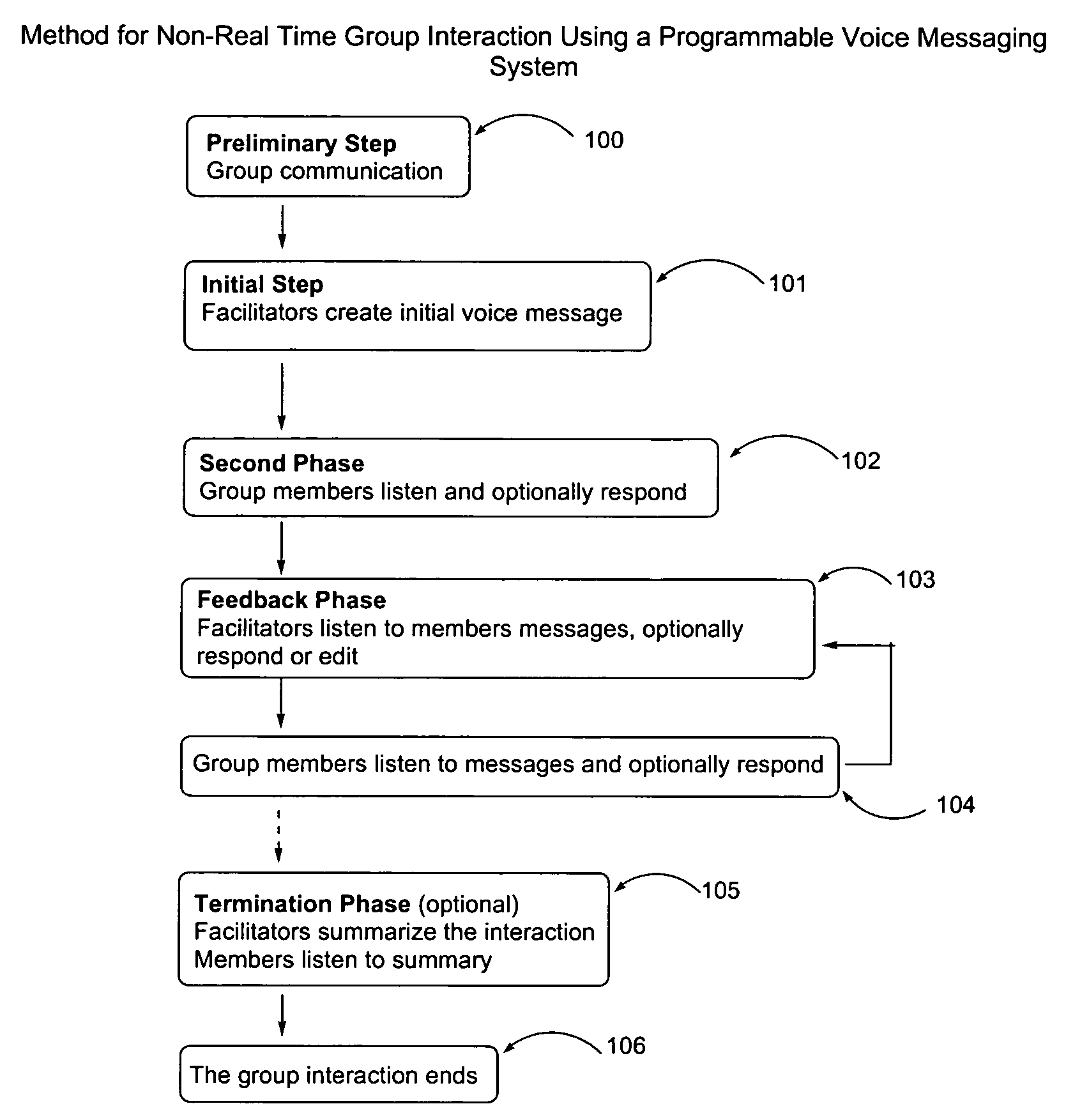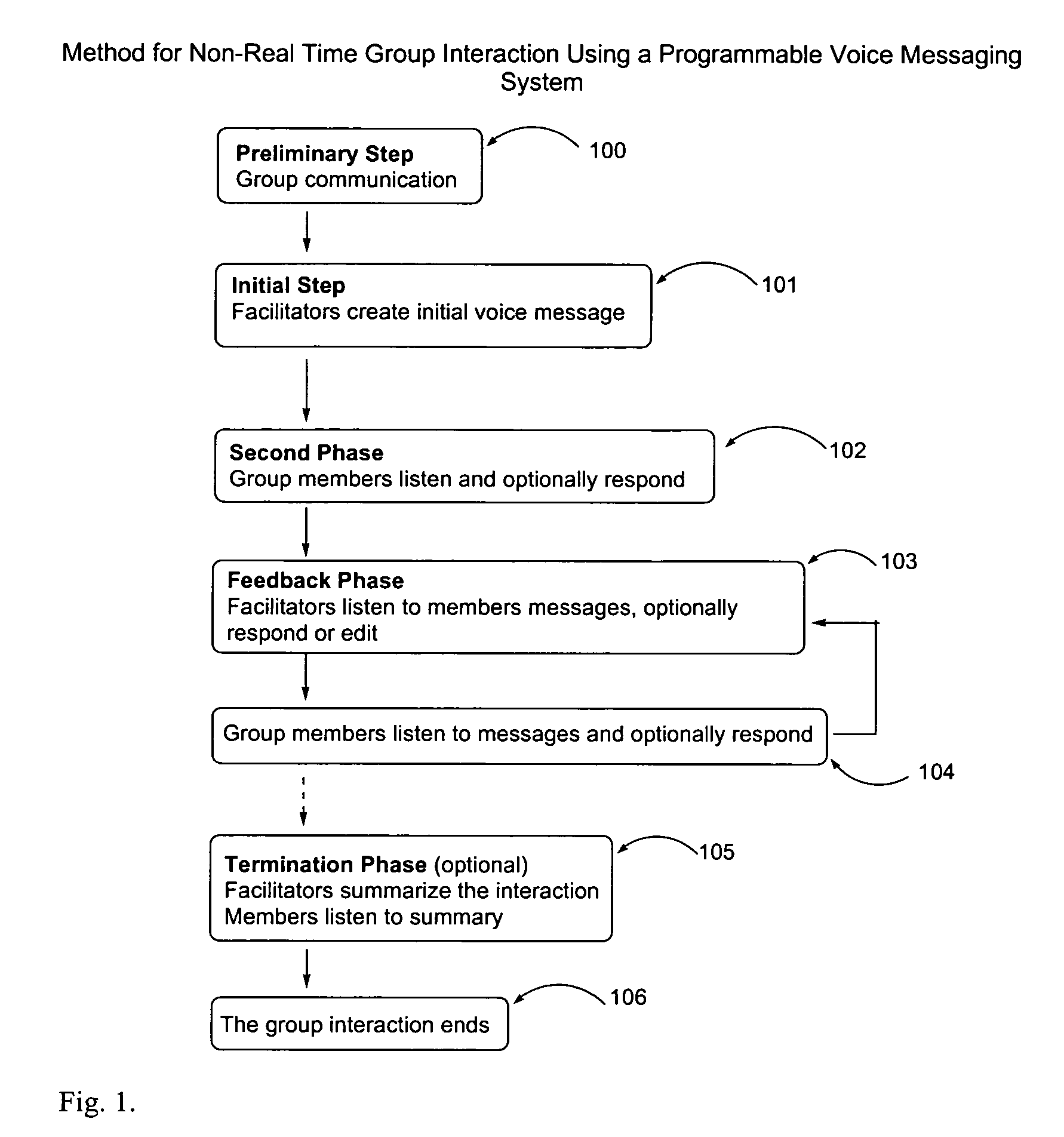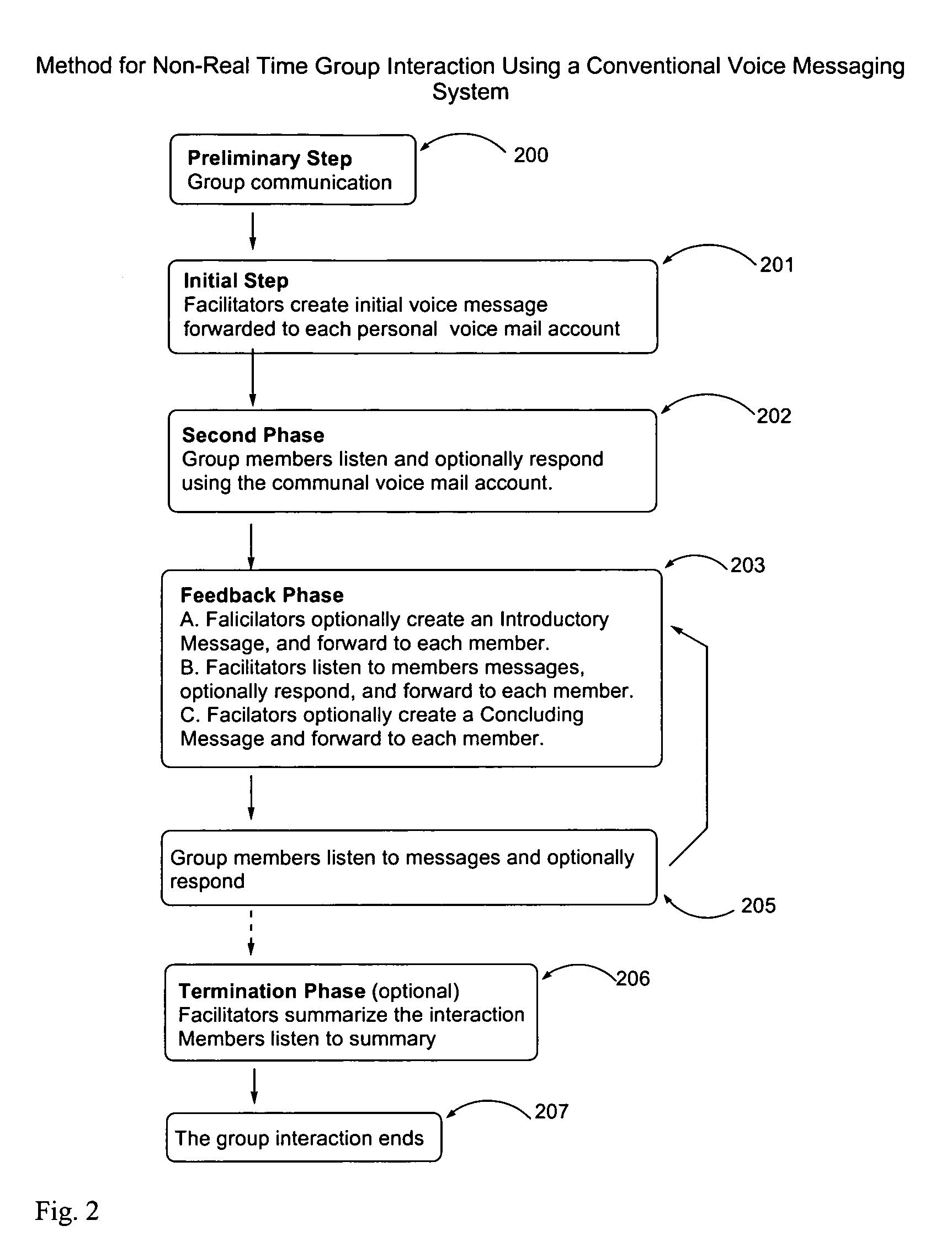Method for non-real time group interaction using a voice messaging system
a voice messaging and non-real-time technology, applied in the field of telecommunication systems and processes, can solve the problems of lack of structure or facilitation of interaction, haphazard and unstructured dialogue, and methods generally
- Summary
- Abstract
- Description
- Claims
- Application Information
AI Technical Summary
Benefits of technology
Problems solved by technology
Method used
Image
Examples
example 1
[0121]This example describes a group interaction using a PVMS involving two rounds of interaction over a period of eight days.
Preliminary Work
[0122]As a preliminary step a group would have to be in communication by mail, telephone, website, personal contact, or the like, to have the group interaction schedule, authentication codes provided, and member and facilitator accounts established.
Monday
[0123]In the first step in this method, the initial interaction phase, the facilitator engages the voice message system by calling the system, and entering his or her facilitator's authentication code. Next, the facilitator would provide a voice message for the group, which in the initial step may include a welcome message, introductory remarks about practical matters, and a substantive message, which might be in the form of a lecture, extemporaneous or prepared in advance, and may also be in the form of pre-recorded information taken, for instance, from a collection of the facilitator's instr...
example 2
[0134]In another example of a specific application of this invention, a group interaction could be conducted in the same order of events as in Example 1, but in as short a time as a few minutes, for example, in five or ten minutes, or in twenty or thirty minutes, or in forty or sixty minutes. Such a “rapid-fire” group interaction or “fast-paced” group interaction might, for example, be useful for participants who want to have a quick group discussion in response to a radio or television broadcast, or a broadcast program delivered over the Internet.
example 3
[0135]In another example of a specific application of this invention, a version of this method uses a CVMS. This Example will illustrate this method without a repeat of the feedback loop phase, and with a termination phase.
[0136]In a group conducted with this version of this method, a VMS would be established for a discussion group with a facilitator and several members, with personal voice mail accounts for the facilitator and each member, and a communal voice mail account owned by the facilitator. Also, a distribution list of all the personal accounts will be created for the facilitator. The facilitator would call the system on a Monday and record an “Initial Message,” comprising a lecture or other presentation, and the facilitator will forward the Initial Message to the personal voice mail accounts of each group member using the distribution list.
[0137]The group members will then call the system on a Tuesday, listen to the Initial Message, and then each member would access the co...
PUM
 Login to View More
Login to View More Abstract
Description
Claims
Application Information
 Login to View More
Login to View More - R&D
- Intellectual Property
- Life Sciences
- Materials
- Tech Scout
- Unparalleled Data Quality
- Higher Quality Content
- 60% Fewer Hallucinations
Browse by: Latest US Patents, China's latest patents, Technical Efficacy Thesaurus, Application Domain, Technology Topic, Popular Technical Reports.
© 2025 PatSnap. All rights reserved.Legal|Privacy policy|Modern Slavery Act Transparency Statement|Sitemap|About US| Contact US: help@patsnap.com



